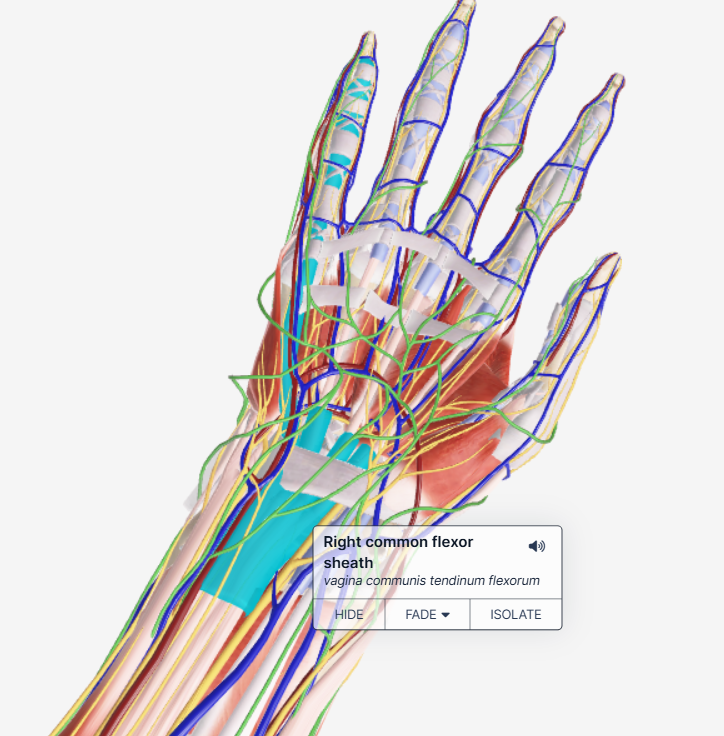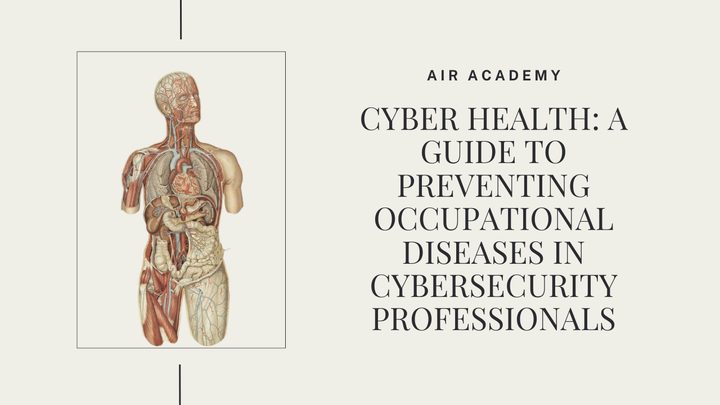The Hidden Pain of Cyber Specialists: How Sedentary Work Affects Your Joints and Muscles

Long hours at a desk, minimal movement and repetitive tasks make working in cybersecurity unexpectedly physically demanding. Poor posture, prolonged sitting and constant typing can lead to joint pain, back problems and pinched nerves. Over time, these issues can lead to chronic discomfort, limited mobility, and serious health problems.
This article discusses the most common musculoskeletal disorders among cyber professionals and ways to prevent them.
Chronic Back And Neck Pain
One of the most common problems is chronic back and neck pain caused by prolonged sitting and poor posture. Remaining in the same position for hours weakens the back muscles and increases pressure on the spine. This often leads to cervical spondylosis, a degenerative condition where the vertebrae in the neck wear down, causing stiffness, pain and even nerve compression. Another common problem is herniated discs, where the soft tissue between the spinal bones bulges or ruptures, compressing nerves and causing severe pain or numbness. Leaning the head forward, a common habit when leaning against computer screens, strains the neck muscles and accelerates spinal misalignment. Over time, these conditions can lead to chronic discomfort, reduced flexibility and headaches.
To prevent these problems, cyber professionals should focus on ergonomic adjustments, regular movement and strengthening exercises.


Joint Issue
Prolonged inactivity and repetitive movements put excessive strain on joints, leading to chronic pain, stiffness and reduced mobility. Cyber specialists, who often spend hours in the same position with limited movement, are at risk of developing various joint-related conditions over time. One of the most common problems is osteoarthritis, a degenerative joint disease caused by the gradual breakdown of cartilage. This wear and tear, exacerbated by prolonged sitting and lack of exercise, leads to joint pain, stiffness and reduced flexibility, particularly in the knees and hips. Another common problem is tendinitis, an inflammation of the tendons, often in the wrists, elbows and shoulders due to repetitive typing and mouse use. This condition causes pain, swelling and difficulty moving, making everyday tasks uncomfortable. Another risk is frozen shoulder, which occurs when prolonged immobility leads to stiffness and restricted movement in the shoulder joint. Over time, the shoulder becomes increasingly painful and difficult to move, severely limiting mobility.
Preventing joint problems requires regular exercise, ergonomic adjustments and strength training.


Carpal Tunnel Syndrome & Wrist Strain
Repetitive hand movements, such as constant typing and use of a mouse, put considerable strain on the wrists and fingers. Over time, this can lead to carpal tunnel syndrome, a condition in which the median nerve is compressed as it passes through the wrist. Symptoms include numbness, tingling, weakness and pain, often worse at night or during long periods of work. If left untreated, it can lead to permanent nerve damage and reduced hand function.

In addition to carpal tunnel syndrome, prolonged use of a keyboard and mouse can cause tendinitis in the wrists and fingers, resulting in pain and stiffness. The strain of repetitive movements can also contribute to De Quervain's tenosynovitis, a painful inflammation of the tendons on the thumb side of the wrist. These conditions make even simple tasks, such as grasping objects or clicking a mouse, increasingly painful.

To prevent wrist strain, cyber professionals should use ergonomic keyboards and mice, maintain proper wrist positioning, and take frequent breaks to stretch their hands and fingers.
Trucker’s Syndrome (Piriformis Syndrome)
One of the lesser-known but serious conditions is piriformis syndrome, often referred to as trucker's syndrome. Although this syndrome is more commonly associated with truck drivers, cyber professionals face similar risks due to their sedentary nature. It occurs when the piriformis muscle, located deep in the buttocks, becomes tight or inflamed and compresses the sciatic nerve. The result is excruciating pain, numbness and tingling radiating from the lower back into the legs, often mistaken for a slipped disc or sciatica.

Prolonged sitting reduces blood circulation and puts constant pressure on the lower back and buttocks, causing muscle stiffness and nerve compression. Poor posture and lack of exercise exacerbate the condition, making even short walks painful. Left untreated, Trucker's Syndrome can severely limit mobility, disrupt sleep and cause constant discomfort.
To prevent this, professionals should take regular breaks, practice sitting and standing stretches, and incorporate hip strengthening exercises. Using an ergonomic chair with proper lumbar support and regularly switching to a standing desk can also reduce pressure on the lower body. If symptoms persist, physiotherapy or massage may be needed to restore mobility and reduce nerve compression.
Conclusion
The sedentary nature of cybersecurity work poses hidden risks to physical health, with prolonged sitting, repetitive movements and poor posture contributing to chronic pain and musculoskeletal disorders. Conditions such as chronic back and neck pain, joint problems, carpal tunnel syndrome and trucker's syndrome can severely impact mobility and overall well-being if left untreated.
Preventing these problems requires proactive measures, including ergonomic adjustments, regular exercise, targeted exercises and correct posture. Small changes such as taking breaks, stretching and using supportive equipment can make a big difference in reducing strain and preventing long-term damage.
Cyber professionals are dedicated to securing the digital world, but it's equally important to prioritize their own health. Awareness and early intervention are key to maintaining physical well-being and ensuring a long, pain-free career.

